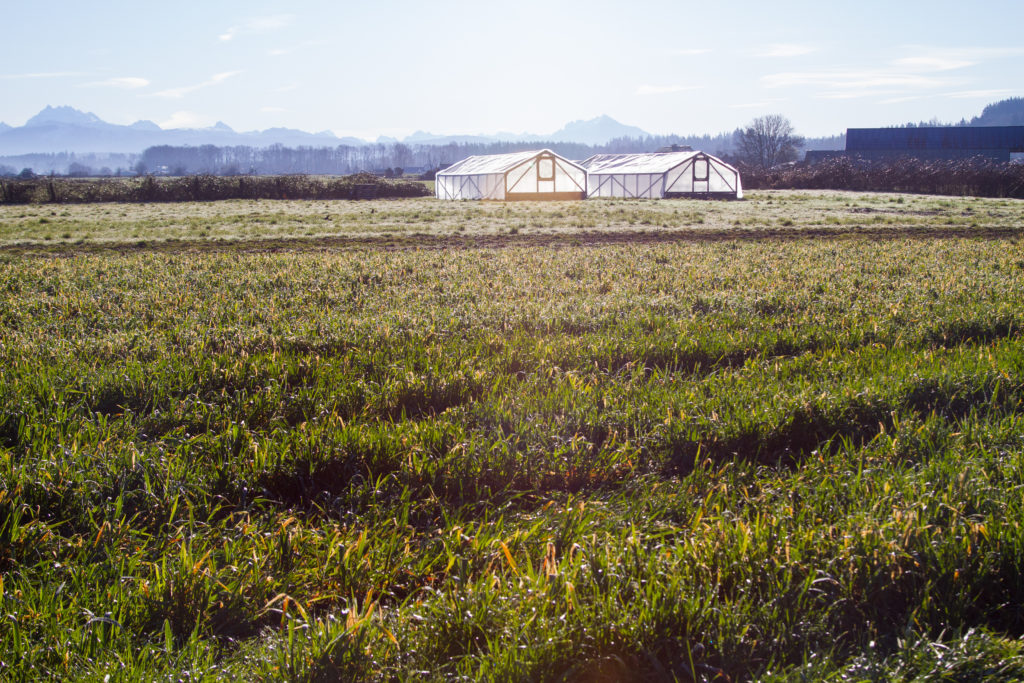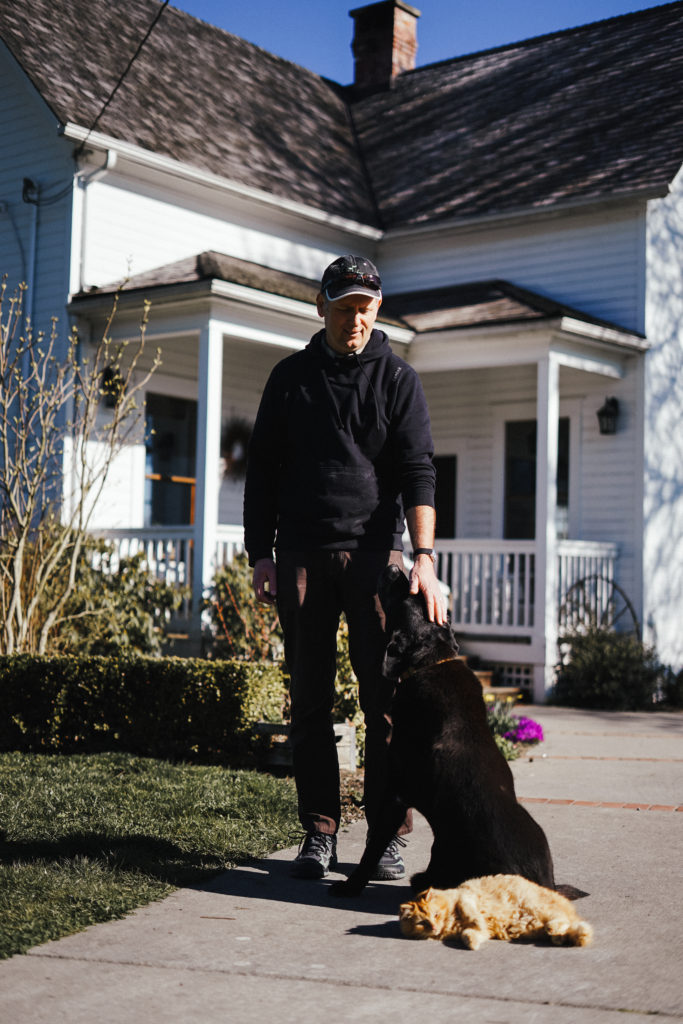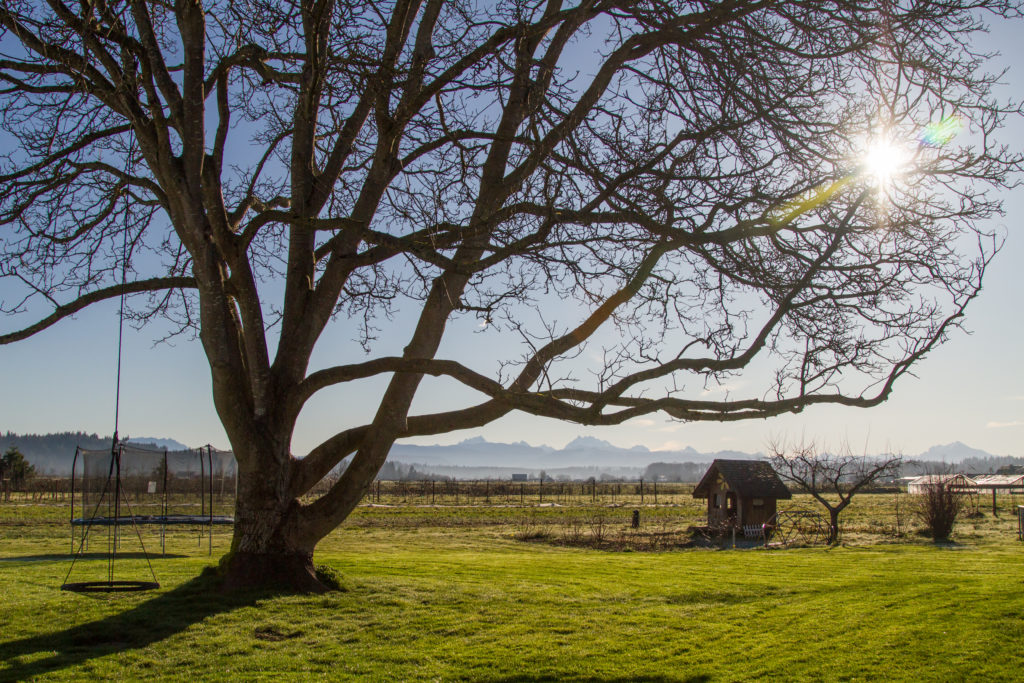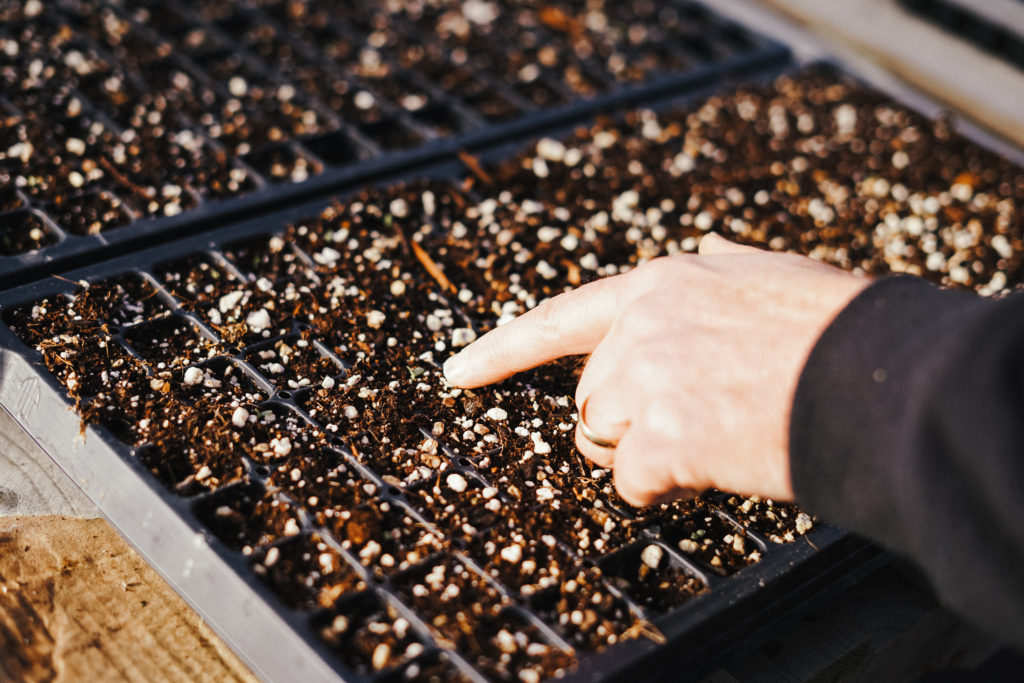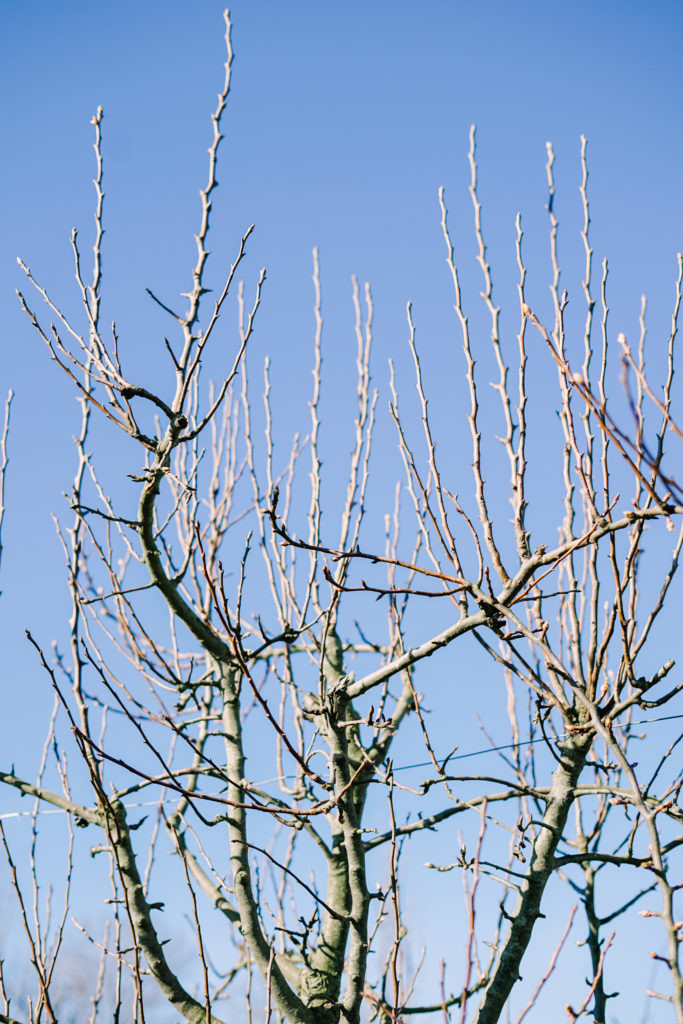I grew up in dirty boots, my Ariats always coated in a thick layer of dust. I never really bothered to clean my boots, because in my mind I knew they were just going to get dirty again anyway. I’ve since moved away from my rural Arizona life and have adopted a different kind of boot: rainboots. This morning I slipped on my rainboots as I usually do, but instead of trekking into the city, I jumped in my hatchback and headed north. My destination: Klesick Family Farm.
Tristan Klesick is a local, organic, first-generation farmer here in Washington — his farm situated just south of Stanwood. I imagined a large “KLESICK FAMILY FARM” sign to welcome me, but instead I drove right past his charming, unassuming operation, making a U-turn about 100 yards down the road. He, along with an old black lab named Chungo and a fluffy, orange spitfire kitten named Flash, awaited me outside of his farmhouse approximately five minutes before our meeting time. My kind of people.
My favorite thing about farms is how they all seem to be identical, yet so unique at the same time: This one is a great, white wooden home with large windows next to the biggest walnut tree you can imagine.
“Original air conditioning! In the summer, [walnut trees] leaf out and block the morning and the evening sun. And in the winter, they’re deciduous, so the light gets through.”
I love fun facts. Today is going to be great.
Tristan didn’t hesitate to immediately begin showing me around his farm. He pointed out where the snap peas will be planted in a month, where the blackberries grow, the sprouting garlic. His job feeds the soil and the soil will feed the plants. Five grandkids have joined his nine children, ranging from 8 to 27. Future organic farmers, time will tell, but all of them know where food comes from.
Tristan doesn’t look at his farm as “just a farm.” It’s a whole ecosystem.
“We’re doing shorebirds and rabbits and salamanders and earthworms and coyotes in addition to growing food for people. This land is so multi-benefit — it can do so much. There’s so much activity here.”
There are unique challenges to being an organic farmer. One of which: no chemicals. When non-organic farms have a pest issue, they get pesticides; when organic farms have a pest issue, they get creative.
“We’ve planted trees for birds and added bird houses for swallows and bat houses for bats. We’re trying to increase the biology … because we really need some insect eaters. They have to eat the bad bugs.”
Tristan explained how climate change has been an additional challenge in addition to his pest battle. “It’s getting warmer … we see new pests coming here that haven’t been here before.”
The 12-spot cucumber beetle is an unwanted guest that’s invaded Tristan’s farm. He chose not to plant his fall crop of vegetables because of them. And with the lack of rain last year between June and September, the beetles invaded the only place they could find water: the vegetables.
Pests aren’t Tristan’s only challenge on his farm.
“My house is 14 feet above sea level, [the field] is zero feet above sea level.” He’s farming in a floodplain. Floods are expensive and a big hassle. “We have to plan for local food now, and the way we do that is by preserving the habitat, and the open space, and the water filtration and the flood storage, and also for the land so that farmers can farm this ground in the future.”
But with even with all of these challenges, there are great benefits. Tristan is able to connect with people in a way so many wish we could. As Co-chair of the Sustainable Lands Strategy, he is intertwined in many groups with varied interests and is able to bring everyone together under a common value. “My passion is the community. Sustainable Lands Strategy is for people and for conservation.”
If there’s one thing I learned from this visit it’s that Tristan is a passionate person. He loves his farm. He loves his community. And he isn’t afraid to get his boots dirty.
